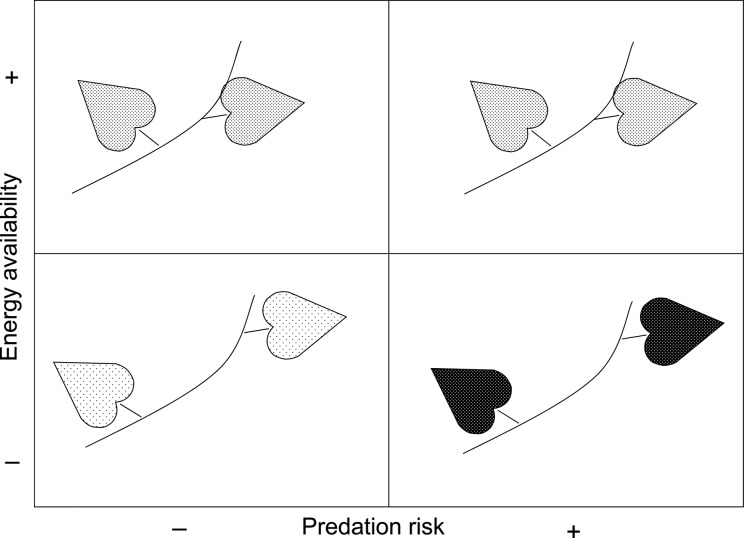Figure 1.
Anti-predator behaviour, measured as leaf alkaloid concentration (= density of points), and foraging behaviour, measured as internode length, in C. arvensis vines (Gianoli et al. 2007). Experimental plants were subjected to a factorial array of light availability (sun vs. shade) and support availability (climbing vs. prostrate vines). Field data indicate that predation (herbivory) risk is much higher on prostrate vines. Results verified the hypothesis that vines should show reduced anti-predator behaviour and increased foraging in the shade (fewer resources available). This agrees with animal-derived theory that posits that individuals are more willing to take predation risks during foraging when energetically stressed (Lima 1998).

